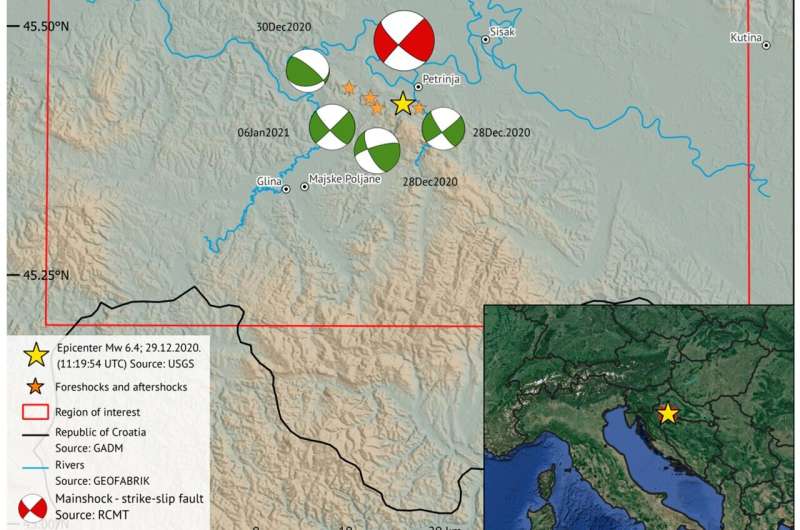This article has been reviewed according to Science X's editorial process and policies. Editors have highlighted the following attributes while ensuring the content's credibility:
fact-checked
trusted source
proofread
Study shows magnitude of displacements by December 2020 Petrinja earthquake

The December 2020 earthquake near the Croatian town of Petrinja (magnitude 6.4) was felt in all Croatia and in many places in the neighboring countries, and caused serious damage at the site. A recent Croatian-Hungarian collaboration has analyzed the horizontal and vertical displacements caused by the quake and placed them in a regional geodynamic interpretation frame.
The displacements caused by the Petrinja quake have already been estimated in several previous works. The new results are methodologically novel in that they use an unprecedented amount of geodetic data to reconstruct three-dimensional motions. In addition to the InSAR data (from Copernicus Sentinel-1 mission), data from three hundred re-occupying GNSS stations of lower-order trigonometric and GNSS networks were processed.
The results, appearing in Remote Sensing, showed that the magnitude of horizontal displacements in the epicenter of the earthquake was 40 centimeters in some places, with a maximum of 20 centimeters in the vertical direction.
The last earthquake of this magnitude in the region was the one in Zagreb in 1880. In the 140 years between the two quakes, the horizontal displacement of the region today, measured by GPS stations, of 2–4 millimeters per year—a local manifestation of plate tectonics—would cause a displacement on the order of the displacement observed in the recent quake.
This suggests that displacements due to global tectonics and plate movements in the Petrinja-Zagreb region are realized mostly by individual events, earthquakes, rather than continuous movement.
This is important information not only for Croatia when assessing earthquake safety, but also for the neighboring areas.
More information: Marko Pavasović et al, The Largest Geodetic Coseismic Assessment of the 2020 Mw = 6.4 Petrinja Earthquake, (2024). DOI: 10.3390/rs16122112
Provided by Eötvös Loránd University



















